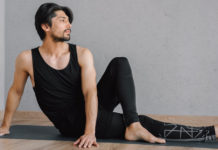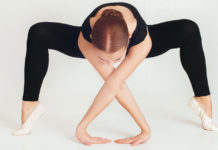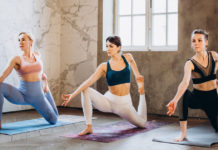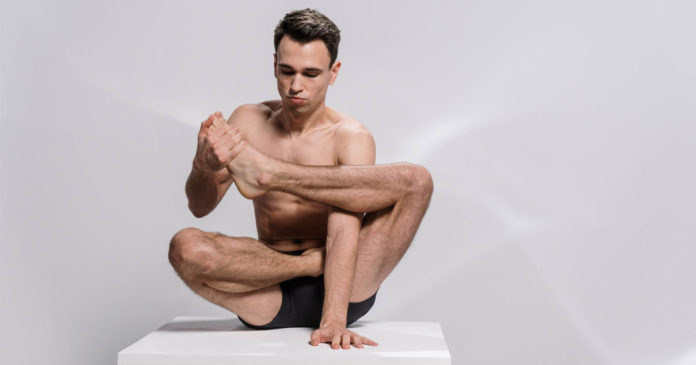Beginning practitioners of yoga can benefit from seated yoga postures as a gentle and accessible introduction to this time-honored discipline. Seated yoga poses for beginners may be practiced by people of various body kinds and fitness levels, unlike more advanced poses that require strength and flexibility. We’ll talk about the benefits of practicing sitting yoga poses in this part, including how easy they are for beginners to master.
Seated yoga poses for beginners
Seated yoga poses for beginners provide them with a solid foundation on which to develop mindfulness, flexibility, and strength. Because these poses are typically performed while situated on the floor or in a chair, individuals with limited mobility or who find it challenging to assume upright positions may engage in them. By focusing on sitting position and breath control, beginners may build their physical talents and self-confidence gradually without feeling overwhelmed.
One of the primary advantages of doing seated yoga poses for beginners is that they help to stretch and release tension in various body parts. These gentle stretches help to gradually build flexibility since beginners often have tight muscles or a limited range of motion. Relax and increase flexibility with these sitting stretches that target many muscle groups: hips, spine, shoulders, and neck.
Moreover, seated yoga poses for beginners may not only benefit them physically, but also mentally and emotionally. Situated in a grounded pose, practitioners may focus inward on their breath and thoughts as it fosters peace. By promoting relaxation and improving mental clarity, this deliberate approach reduces stress.
In summary, seated yoga poses for beginners are an excellent place for novices to start due to their accessibility and many benefits. Whether you want to discover a gentle form of exercise that encourages relaxation or you want to develop your flexibility, including these simple postures into your daily routine might be a terrific way to start along the road towards overall well-being via yoga practice.
Benefits of Seated Yoga Poses for Physical and Mental Well-being
Seared yoga poses for beginners provide many benefits for both your physical and mental well-being. These poses are very beneficial for beginners as a mild introduction to yoga.
The flexibility gained from seated yoga poses is one of its main advantages. By regularly adopting these postures, people may gradually increase their range of motion, which will help with daily chores and reduce their risk of injury.
Seated exercises have the potential to enhance core strength. Taking on diverse sitting postures helps people work and exercise their abs, which enhances stability and posture.
In addition to their many physical benefits, seated yoga poses have a major beneficial impact on mental well-being. Seated meditation, which encourages focus and relaxation and helps reduce tension and anxiety, is a common practice in yoga sessions.
25 Seated Yoga Poses for Beginners
Seated yoga poses are a great way for beginners to start their yoga practice. They can help improve flexibility, posture, and overall well-being.
Here are 25 seated yoga poses for beginners:
1. Easy Pose (Sukhasana):
Sit cross-legged with a straight spine, resting your hands on your knees.
2. Seated Forward Fold (Paschimottanasana):
Extend your legs in front of you and fold forward, reaching for your feet or ankles.
3. Butterfly Pose (Baddha Konasana):
Bring the soles of your feet together and gently press your knees towards the ground.
4. Seated Side Bend:
Sit cross-legged and reach one arm up and over to the opposite side, stretching the side of your body.
5. Seated Spinal Twist:
Sit cross-legged, place one hand on the opposite knee, and twist your torso towards the back.
6. Half Lord of the Fishes Pose (Ardha Matsyendrasana):
Sit with one leg extended and the other foot crossed over the extended leg, twist towards the crossed leg.
7. Cow Face Pose (Gomukhasana):
Stack one knee on top of the other and reach your arms behind your back, clasping your hands.
8. Seated Cat-Cow Pose:
Sit cross-legged and round your spine like a cat, then arch your back and lift your chest like a cow.
9. Head-to-Knee Forward Bend (Janu Sirsasana):
Sit with one leg extended and bend the opposite knee, folding forward towards the extended leg.
10. Seated Wide-Legged Forward Fold (Upavistha Konasana):
Sit with your legs spread wide and fold forward, reaching for your feet or the ground.
11. Seated Pigeon Pose:
Cross one ankle over the opposite leg and gently press down on the crossed knee, feeling a stretch in the hip.
12. Half Butterfly Pose:
Extend one leg in front of you and bend the other knee, placing the sole of the foot against the inner thigh of the extended leg.
13. Seated Mountain Pose:
Sit with a straight spine, grounding your sit bones and reaching the crown of your head towards the sky.
14. Seated Heart Opener:
Interlace your fingers behind your back and gently lift your chest, opening up the front of your body.
15. Seated Twist with a Strap:
Sit cross-legged and wrap a strap around your upper back, holding onto it with both hands, and twist towards one side.
16. Seated Camel Pose:
Kneel on the ground and place your hands on your lower back as you gently arch your spine and lift your chest.
17. Seated Boat Pose:
Sit with your knees bent and feet on the ground, lean back slightly and lift your feet off the ground, balancing on your sit bones.
18. Seated Mountain Climbers:
Sit with your knees bent and feet on the ground, lean back slightly and alternate lifting your feet off the ground as if climbing a mountain.
19. Seated Side Leg Lifts:
Sit with your legs extended and lift one leg to the side, then lower it back down. Repeat on the other side.
20. Seated Shoulder Opener:
Sit with a straight spine and interlace your fingers behind your back, gently lifting your arms away from your body.
21. Seated Forward Bend with a Strap:
Extend your legs in front of you and loop a strap around your feet, then fold forward, using the strap to deepen the stretch.
22. Seated Eagle Pose:
Cross one leg over the other and wrap the top foot around the calf of the standing leg, then cross your arms and bring your hands together.
23. Seated Mountain Pose with Side Stretch:
Sit with a straight spine and reach one arm up and over to the opposite side, stretching the side of your body.
24. Seated Ankle Stretch:
Sit with one leg extended and bend the other knee, placing the ankle of the bent leg on top of the extended leg, then gently press down on the bent knee.
25. Seated Meditation:
Sit comfortably with a straight spine and close your eyes, focusing on your breath and letting go of any tension or stress.
Always pay attention to your body and adjust or avoid any positions that cause you pain or discomfort. It’s important to practice yoga mindfully and with awareness of the limits of your body. Savor the advantages of practicing sitting yoga and reap the rewards!
Tips and Modifications for a Safe and Comfortable Practice
When doing seated yoga poses for beginners, it is essential to prioritize your comfort and safety. By following a few simple rules and adjustments, you can ensure that it’s enjoyable and safe.
Selecting seated yoga poses for beginners is crucial. Several common seated poses for beginners include Easy Pose (Sukhasana), Bound Angle Pose (Baddha Konasana), and Sitting Forward Fold (Paschimottanasana). These postures provide a solid foundation for building strength and flexibility.
If you want to improve safety during your practice, consider using bolsters or blocks. Especially if you have a limited range of motion, these devices might offer additional support and stability. To maintain alignment and prevent excessive strain on the lower back. It may be beneficial to use a block to support your hips in Easy Pose.
Finally, but just as importantly, remember to breathe deeply while practicing. Deep breathing helps with both physical and mental calm with each pose.
Using these modifications and tips for seated yoga poses, even as a novice. You may create a secure and pleasant practice that improves your overall health.
Incorporating Seated Yoga into Your Daily Routine: How to Make It a Habit
Making seated yoga a part of your daily routine, especially with seated yoga poses for beginners. You can bring numerous benefits to your physical and mental well-being. Here are a few tips to help you establish a habit of practicing seated yoga:
Start small: Begin with short sessions, dedicating just a few minutes each day to practicing seated yoga poses for beginners. Gradually increase the duration as you become more comfortable.
Create a dedicated space: Designate a quiet and peaceful area in your home for your seated yoga practice. Make it a space that inspires relaxation and focus while exploring various seated yoga poses for beginners.
Set a regular schedule: Choose a specific time of day that works best for you and commit to practicing seated yoga poses for beginners at that time every day.
Utilize guided resources: Explore online videos, apps, or books that provide guided sessions focusing on seated yoga poses for beginners. These resources can help you stay motivated and learn proper techniques.
Stay consistent: Consistency is key when establishing a habit. Even on busy days, try to find a few minutes for your seated yoga practice. It can practice incorporating different seated yoga poses for beginners. Remember, every little bit counts.
By following these tips and making seated yoga, including seated yoga poses for beginners, a priority in your daily routine. You can experience the physical and mental benefits of this practice while cultivating a healthy habit that supports your overall well-being.
The Importance of Breathing Techniques in Seated Yoga Poses for Beginners
Beginning practitioners of yoga may find seated positions to be an effective way to acclimate to the various postures. Seated yoga poses for beginners help practitioners focus on their breathing and alignment by providing stability and support. Nevertheless, it’s important to adopt proper breathing techniques, or pranayama, while in certain sitting positions.
All yoga poses, including the seated ones, need the application of yogic breathing techniques. Pranayama includes the intentional regulation and control of breathing to enhance one’s physical and mental health. Deep belly breathing methods may be used into seated yoga poses with potential benefits for practitioners.
One of the major purposes of yogic breathing techniques in sitting postures is to promote relaxation and focus. Deep belly breathing reduces stress and fosters calmness by activating the parasympathetic nervous system. This might be especially beneficial for those who struggle with anxiety or finding it hard to unwind throughout their practice.
Moreover
Moreover, appropriate breathing techniques during seated yoga poses for beginners not only encourage relaxation but also improve concentration and attentiveness. By paying conscious attention to each inhalation and exhalation, practitioners develop a sense of present-moment awareness. Because of this heightened concentration, they are capable of forging a more profound rapport with their physical being and attaining greater unambiguity throughout their exercises.
Additionally, there are health benefits to deep belly breathing when seated. Practitioners increase oxygen intake by fully extending the lungs with each breath, which improves circulation and muscle oxygenation. This might increase flexibility and lessen any discomfort or strain that could arise from adopting certain sitting postures.
Finally, it is critical to adopt yogic breathing techniques to maximize the benefits of seated yoga poses for beginners. Deep belly breathing promotes relaxation and enhances focus and concentration in addition to providing health advantages including improved circulation and flexibility. A more thorough method of doing seated yoga may be beneficial for those who include proper pranayama into their practice.








